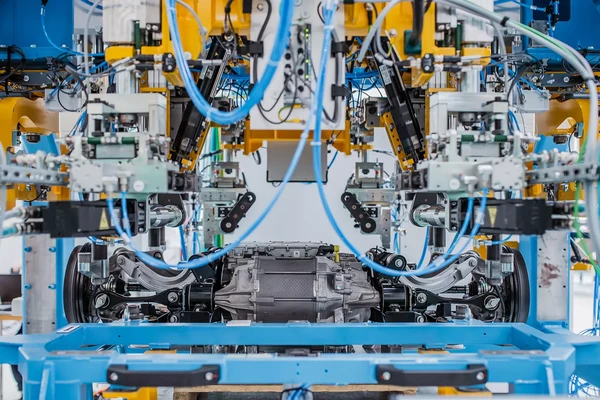In the realm of construction and engineering, where precision and safety reign supreme, bolting systems stand as the unsung heroes, holding structures together with steadfast reliability. From towering skyscrapers to intricate machinery, these systems form the backbone of structural integrity, ensuring stability and durability in the face of immense forces and dynamic environments.
The Essence of Bolting Systems
At its core, a bolting system comprises various components Oil fleet tools meticulously engineered to join two or more objects securely. While seemingly simple in concept, the effectiveness of these systems lies in their intricate design and precise application. Bolting systems encompass a range of elements, including bolts, nuts, washers, and sometimes additional features like pins or locknuts, each serving a crucial role in the assembly process.
Types of Bolting Systems
Bolting systems come in diverse forms, tailored to meet the specific requirements of different applications. Common types include:
- Structural Bolting: Vital in construction projects, structural bolting involves fastening steel elements to form robust frameworks. High-strength bolts and nuts are employed in this context, often with pre-tensioning techniques to enhance stability and load-bearing capacity.
- Machinery Bolting: In industrial settings, machinery bolting ensures the proper assembly and operation of equipment. These systems demand precision and reliability to withstand constant vibrations, torque, and operational stress.
- Flange Bolting: Essential for connecting pipes and components in pipelines and petrochemical plants, flange bolting requires specialized fasteners capable of withstanding extreme pressures and temperature fluctuations.
- Automotive Bolting: In the automotive industry, bolting systems play a critical role in vehicle assembly, securing components ranging from engine parts to chassis elements. These systems must withstand rigorous testing and operational conditions while ensuring safety and performance on the road.
Key Considerations in Bolting Systems
Designing and implementing an effective bolting system entails careful consideration of several factors:
- Material Selection: Bolts and nuts are crafted from a variety of materials, including carbon steel, stainless steel, and alloys, chosen based on factors such as strength, corrosion resistance, and environmental conditions.
- Torque and Preload: Achieving the optimal preload, or tension, in a bolt is crucial for its performance under load. Torque specifications and tightening sequences must be precisely controlled to ensure uniform preload distribution and prevent premature failure.
- Environmental Factors: Bolting systems may be subjected to harsh environmental conditions, such as extreme temperatures, moisture, and corrosive agents. Proper coatings, sealants, and material selection are imperative to mitigate corrosion and degradation over time.
- Installation and Inspection: Proper installation procedures, including bolt alignment, torque application, and verification of preload, are paramount for the integrity of the bolting system. Regular inspection and maintenance help identify potential issues early, ensuring continued reliability and safety.
Advancements and Innovations
Driven by the relentless pursuit of efficiency and reliability, the field of bolting systems continues to evolve with technological advancements and innovative solutions. Emerging trends include:
- Smart Bolting Technologies: Integration of sensors and monitoring systems allows real-time tracking of bolt performance, enabling predictive maintenance and proactive troubleshooting.
- Composite Bolting Materials: The development of lightweight yet durable composite materials offers alternatives to traditional metal fasteners, catering to applications where weight reduction is critical without compromising strength.
- Automated Assembly Systems: Automated bolting systems streamline the assembly process, enhancing precision, consistency, and productivity while minimizing human error.
- Environmentally Friendly Solutions: Eco-friendly coatings and lubricants reduce the environmental impact of bolting systems, aligning with sustainability goals without compromising performance.
Conclusion
In the intricate tapestry of modern engineering and construction, bolting systems stand as silent sentinels, upholding the structural integrity of the built environment. From towering skyscrapers to intricate machinery, these unassuming components play a pivotal role in ensuring safety, reliability, and longevity. As technology continues to advance and challenges evolve, the evolution of bolting systems remains inexorable, driven by the pursuit of innovation and excellence in engineering craftsmanship.
